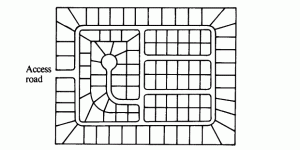1. Not getting the proper reserve items on the reserve schedule.
This is the most common mistake associations make when budgeting for reserves. They unknowingly omit some items that should be on the schedule. Most associations are aware of roofing, painting, and paving requirements, but some items that are not often thought about are the hidden or concealed items like water lines, sewer lines, storm drainage, perimeter fencing, lift stations, pumps, fire systems, exercise equipment, sea walls.
2. Failing to fund reserves close to the beginning of the development.
There is a tendency in new construction to ignore long-lasting reserve items and to delay funding accounts because items are new. Once the community is built out, it is on its own. At this stage, I highly recommend a reserve study to make sure all of the proper items are the list and to project reasonable costs and lifespans for these items. If the association doesn’t organize its reserves properly near the beginning, then it will be underfunding and creating a larger and larger deficit over time.
3. Doing things in the wrong order.
Fund your projects your construction projects in a way that makes sense. Do water systems or storm drainage repairs before you pave roadways, otherwise you would have to tear up the roads. Do things that are less important last.
4. Not keeping reserves well-funded.
Well-funded reserves keep property values up. Trying to sell a property with underfunded reserves, a looming special assessment, or unsightly deferred maintenance can be very difficult.
5. Not having a good long term plan.
With reserves, thinking long term is essential. Some associations use unrealistic numbers just to keep the funding levels lower. When this happens, it is usually because someone has an agenda and is just looking short term. Reserve fund planning requires a long-term approach so that all members contribute equitably over time.
6. Failing to keep a good capital expense history.
Setting up and maintaining reserves with good data is much easier than with limited or no records. It is also beneficial to have real data on reserve items such as the last time they were replaced and how much they cost. This may also help future boards or a reserve analyst accurately project funding. More importantly, these old records can help a board know whether a future construction bid is reasonable based on how much it cost last time.
